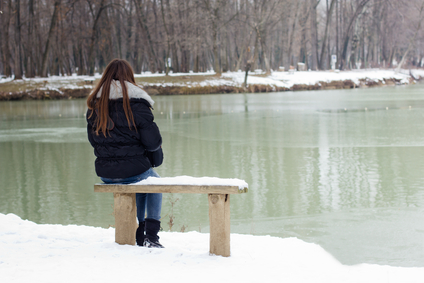
The term is often used interchangeably with the term: winter depression, although in reality they are not synonyms. Depression can, in fact, repeat the fall or cover the entire autumn-winter season. Furthermore, there is summer depression, occurring less frequently but in some countries the indicator of the disease is high.
Seasonal depression does not have to also identify with seasonal affective disorder. The latter concept is broader and includes other forms of affective disorders repeated seasonally. This implies, in particular, bipolar disorders, in the course of which there are not only the depressions but also mania or hypomania.
Even from this, it follows that seasonal depression is not the same disease in every person. It is one thing for seasonal depression as the recurrent unipolar affective disorder and another seasonal depression a period of the disease in the course of extending seasonal bipolar disorder.
This basic division and the corresponding terminology can explain the following diagram:
non-seasonal affective disorder:
unipolar (depressive disorder recurrent)
bipolar
Seasonal affective disorder:
unipolar (recurrent depressive disorder or recurrent depression in the fall and / or winter, less in other seasons)
Bipolar (recurrent depression usually in late autumn and winter and periods of hypomanic or manic - spring)
The distinction given here seem clear, however, they do not always correspond to the reality of clinical, which is sometimes more complicated. Important is the observation that some patients (perhaps as many as approx. 50%!) The course of seasonal depression is just a prelude before ill as not seasonal or otherwise is entangled by non-seasonal depression. The division between the disorder and seasonal not seasonal is not so sharp. Perhaps it is more appropriate to speak of "the mechanism of seasonal" or "seasonal factor" than completely separate diseases.
Prevalence and typical clinical picture
Seasonal depression
occurs in young, it discloses a period of typically 20-30 r. f., occurs in 1-4% of the general population, but subclinical may be much more widespread, even up to 10%. The severity of the disease increases with age and probably softened in old age.
more common in women: 60-90% (although some are questioning)
It occurs more frequently in areas of deficiency of sunlight (Alaska to 10%)
the beginning and end of the depressive phase fall at the same time of year (the same 90-day period), depression takes a few weeks to several months, episodes are usually mild or moderate, less severe
is quite a typical hypersomnia (excessive sleepiness - but with deterioration, sometimes significantly, the quality of sleep)
Typical are also a significant reduction in the drive, increased appetite for carbohydrates and weight gain
data that is frequently depression in bipolar disorder than unipolar
Pathogenesis
Unknown. It is believed that the disease is associated with the migration of people from equatorial areas far to the north and south, recent from an evolutionary point of view. Seasonal depression certainly is not the only "shortage" of solar lighting, but because of individual susceptibility. The nature of susceptibility is not known. The role to be played by the differences in the mechanisms regulating the circadian biological rhythms; in the operation of this type of biological clock participate intracerebral centers and roads serotonergic and noradrenergic. An important, but the unspecified role played by melatonin probably, may be neurohormone secreted in a different way in patients with seasonal depression.
Seasonal depression - treatment
Phototherapy (light therapy) and treatment with antidepressants have similar efficacy. Considerable interest is, however, light therapy and by some physicians is considered the treatment of choice. Light therapy can be carried out in medical centers, but at the moment of the appearance of the market phototherapy lamps is sometimes conducted independently by the patients themselves. Phototherapy consists of a cycle, usually 10-14, screenings - exposures. Depending on the intensity of the light source the time the session lasts from half to two hours. Time to light therapy may differ, yet often recommended was time for the morning. The side effects are rare. These include a headache, feeling of "pressure in the eyes," dry mucous membranes and eyes. Caution is required at a certain eye diseases as retinitis pigmentosa and patients using insulin-sensitizing drugs to light. Also reported nausea, tremors, insomnia, hyperactivity, and excitement. Because phototherapy, like any effective method of treating depression, increases the risk of hypomania or mania (in the case of bipolar disorder) and for this reason, that treatment may require, at least in certain phases, too, and the use of drug therapy, it is difficult to advise conduct phototherapy on their own, without contact with the doctor. At the same time phototherapy treatment and the antidepressant, it is also a result of the summation of the two modes of therapy, the possibility of some kind of an overdose involving the excessive action of serotonin.
The treatment of seasonal depression is no more difficult than treating other types of depression and in most cases good effects are achieved. The disease, however, should not be trivialized. Only actually very mild seasonal changes in mood and drive can not be treated. Seasonal depression is a real illness, and should be treated. In many cases, it needs careful treatment. The result of specialized help may have to restore efficiency and enable the desired function in the family and professional life.
No comments:
Post a Comment